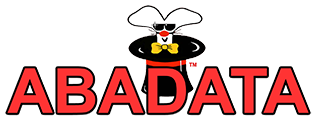
* Click below for more information.
Abadata Computer Corp. Achieves ISO 27001 Compliance Positioning Itself as Elite in Cybersecurity
Leading MTSP Recognized for Superior Cybersecurity Standards and Protocols
MICHIGAN – April, 2025 – Abadata Computer Corp., a leading managed technology services provider (MTSP), is proud to announce it is following the ISO 27001 Compliance Program, a globally recognized standard for information security management. This places Abadata among an elite group of technology providers who have voluntarily chosen to hold themselves to the highest possible cybersecurity standards and protocols—at a time when it matters most.
ISO 27001 is the international gold standard for how organizations should manage information security. While most Managed IT Services Providers (MSPs) operate without clear accountability or regulatory oversight, Abadata has not only equipped itself with leading technologies, but the company has taken another step for their customers, by committing to third-party validation to prove its practices meet stringent data protection and risk mitigation benchmarks. Abadata is leveraging the ISO Compliance Program provided by Technology Assurance Group (TAG), an organization of top managed technology services providers with over a $1 billion in annual products and services. TAG’s comprehensive processes and protocols will enhance Abadata’s operations to successfully become ISO 27001 Compliant.
“Unfortunately, we’re in an industry where anyone can become a Managed IT Services Provider,” said Dave Wineman, President at Abadata. “You could’ve been a truck driver yesterday and start calling yourself a technology provider today. What clients don’t always realize is that without standards, their cybersecurity is only as strong as the judgment of their technician, whose qualifications are tough to ascertain, especially when most business owners tend to be less technical. Earning ISO 27001 compliance proves we don’t just talk about cybersecurity—we execute at the highest level.”
For small to mid-sized business owners, the technology industry can feel like the Wild West. ISO 27001 Compliance brings structure, discipline, and most importantly, proof that a provider is proactively managing risk. It typically takes over six months and tens of thousands of dollars to earn this compliance, meaning only a very small minority actually pursue it, with even fewer achieving it.
“ISO 27001 Compliance is especially relevant for our clients in regulated industries like finance, healthcare, or manufacturing, where compliance requirements are becoming even stricter. In fact, in some cases, cybersecurity insurance claims are denied if businesses don’t work with qualified Managed IT Services Providers.” Wineman continued, “What sets Abadata apart isn’t just the badge on the wall. It’s the expertise, processes, protocols, and globally recognized requirement behind it.”
While ISO 27001 compliance is one key marker to help business owners to decipher between qualified and unqualified cybersecurity organizations, there are other telltale signs to watch for. For example, if your cybersecurity provider’s technology stack is essentially a “one-time, ‘set-it-and-forget-it’” antivirus program, this might serve as a red flag. Additionally, you should be utilizing multi-factor authentication (MFA), not to mention, rigorous patch management and 24/7 monitoring.
“ISO compliance means we’re not guessing. We’re not relying on duct tape fixes or shortcuts. We follow a documented, repeatable process that’s been validated by third-party auditors,” added Wineman.
While many SMBs still believe they’re too small to be a target for cybercrime, the statistics say otherwise. Especially through the proliferation of AI, small businesses need to leverage AI-based technology to outpace cybercriminals. Increasingly, cyber insurance providers and regulatory bodies are beginning to require adherence to standards like ISO 27001, as it provides structure in a wide-open industry. Businesses that can’t prove compliance may face denied claims, legal issues, or lost revenue from downtime and breaches.
Working with an ISO 27001-compliant provider like Abadata ensures that your IT team is not only managing your infrastructure, but also protecting your organization’s reputation and continuity, so that you can focus on revenue growth, company culture and the areas of your business which yield returns.

